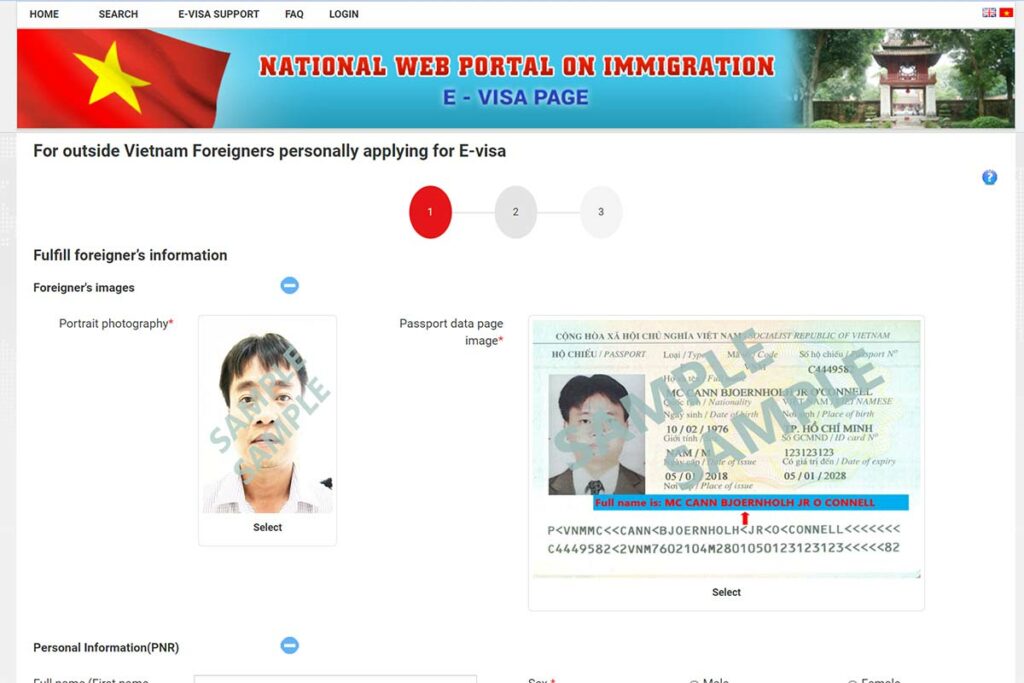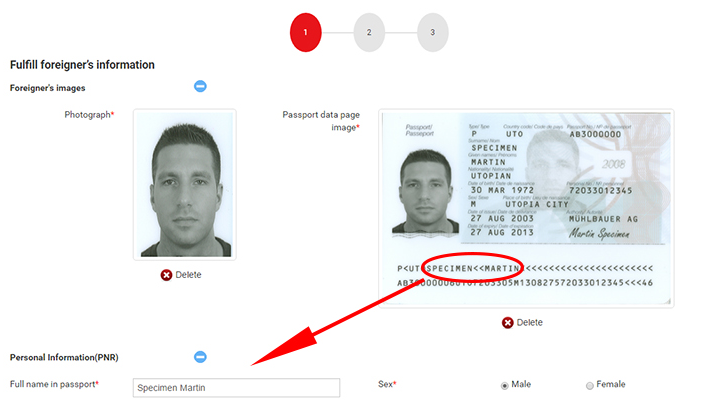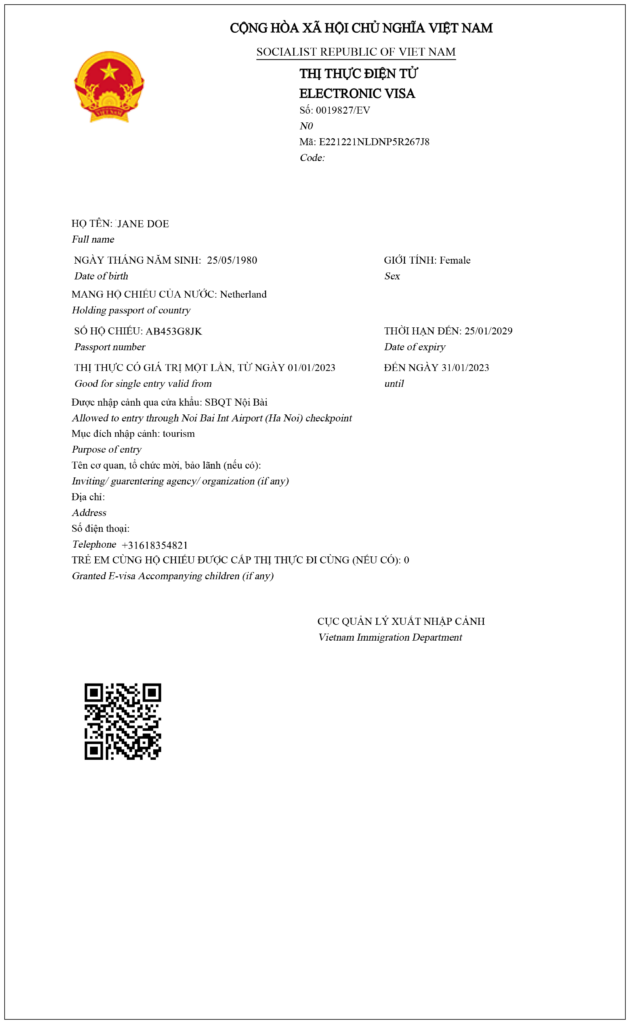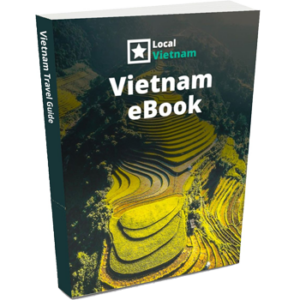If you’re planning a trip to Vietnam, applying for an Vietnam e-visa is an essential step to ensure a smooth entry into the country. The e-visa is the only option for tourists to obtain a visa online, making it a convenient and time-saving option. Failing to obtain a valid visa could lead to being denied boarding your flight to Vietnam, so it’s crucial to apply in advance. Make sure to arrange your Vietnam e-visa on time, to avoid any potential hiccups and a stress-free trip.
The options of Vietnam e-visa
1) Duration of the e-visa
Currently, the Vietnam e-visa is only valid for one month.
However, there have been discussions among the Vietnamese government about extending the e-visa duration to three months, which would provide travelers with a more flexible and convenient option. It’s important to note that these discussions are just talks, and there is no official timeline for when the extended e-visa might become available. Nonetheless, keeping an eye on any updates regarding the duration of the Vietnam e-visa is a wise idea for travelers planning their future trips.
2) Single Entry
It’s important to note that the Vietnam e-visa is a single-entry visa, which means you’re only allowed to enter the country once with the same e-visa. If you leave Vietnam and plan to return, even if it’s within the one-month validity period, you will need to obtain a new e-visa to re-enter the country. Therefore, it’s advisable to plan your itinerary and apply for a new e-visa if you plan to leave and re-enter the country during your trip.
3) Countries that can apply
While many countries are eligible for the Vietnam e-visa, it’s important to note that not all countries are included on the list. Therefore, it’s essential to verify your eligibility.
You can find the list of eligible countries for the Vietnam e-visa on the official website. Alternatively, you can also check if your country is an option during the e-visa application process.
Arrival options
The Vietnam e-visa offers several options for entry, including all international airports and some sea ports. It’s worth noting that while the most frequented used land borders among tourists do accept the Vietnam e-visa, it’s not a universal option for all land borders. In other words, not all land borders permit entry with the e-visa
1) Airports
- Cat Bi Int Airport (Hai Phong)
- Cam Ranh Int Airport (Khanh Hoa)
- Can Tho International Airport
- Da Nang International Airport
- Noi Bai Int Airport (Hanoi)
- Phu Bai Int Airport
- Tan Son Nhat Int Airport (Ho Chi Minh City)
2) Landports
Cambodia
- Ha Tien Landport
- Moc Bai Landport
- Song Tien Landport
- Tinh Bien Landport
- Xa Mat Landport
Laos
- Bo Y Landport
- Cha Lo Landport
- Cau Treo Landport
- Lao Bao Landport
- La Lay Landport
- Nam Can Landport
- Na Meo Landport
- Tay Trang Landport
China
- Huu Nghi Landport
- Lao Cai Landport
- Mong Cai Landport
3) Seaport
- Chan May Seaport
- Da Nang Seaport
- Duong Dong Seaport
- Hon Gai Seaport
- Hai Phong Seaport
- Nha Trang Seaport
- Quy Nhon Seaport
- Ho Chi Minh City Seaport
- Vung Tau Seaport
Applying for a Vietnam e-Visa
Step 1: Website to apply for Vietnam e-Visa
If you’re planning to apply for a Vietnam e-visa, it’s essential to know that you can apply directly through the official website of the Vietnamese Immigration Service. By visiting https://evisa.xuatnhapcanh.gov.vn/, you can access the online application form and complete the process in a few easy steps.

While you may come across various visa agencies online, it’s not necessary to use their services. Applying through these agencies can be more expensive and time-consuming, as they typically use the same official website to process your application. By applying directly through the official website, you can save time and money while ensuring a hassle-free process. So, be sure to visit the official website of the Vietnamese Immigration Service to apply for your Vietnam e-visa.
Step 2: The e-visa form
When filling out the e-visa application form, you will need to provide your passport information, personal details, and trip details. For the “Intended temporary residential address in Viet Nam” section, you can enter the hotel you plan to stay at on your first day or an intended hotel if you have not yet made a booking. The “Intended length of stay in Viet Nam (number of days)” must be 30 days or less, but if you end up wanting to stay longer, it’s not a problem as the e-visa will be valid for one month regardless. It’s important to double or even triple check the form before submitting to avoid mistakes.
Common mistakes:
1- Name entered incorrectly
Pay close attention, because this is one of the most common mistakes. Enter your full name as it appears on the ICAO line of your passport details page. See image below. For example, if you have 2 surnames in your passport, but they are not both in the ICAO line, you only enter the surname that is on that line!

2. Validity of your passport
Make sure your passport is valid for at least six months from your date of entry into Vietnam.
3. Apply on time Request it on time
Apply for your e-visa at least one month in advance to allow ample time for any unforeseen issues or the need to apply for a new one.
4. Check your passport number
Be mindful of the difference between the letter ‘O’ and the number 0 when entering your passport information. In some cases, such as with the Dutch passport, the letter ‘O’ is not used, so it is always the number 0. Make sure to double check your passport number for errors.
5. Place of arrival
Ensure that you select the correct place of entry, as you won’t be able to change it once the application is submitted. Also, be aware that some cities, such as Ho Chi Minh City, may appear twice on the application form, with one option for the airport and another for the sea port. If arriving by air to Ho Chi Minh City, be sure to select the airport option, such as Tan Son Nhat International Airport and not Ho Chi Minh City Seaport.
6. Photo quality
It is important to upload a good quality portrait photo when applying for a Vietnam e-visa. Avoid scanning your passport and cutting out the photo section, as this often results in a low-quality image. Also, make sure that your photo is not too large, as a file size of 5 MB or more may cause issues.
7. No glasses
When taking your photo or taking a selfie, ensure that you are looking straight at the camera, without glasses, and against a plain background.
8. Correct date format
One common mistake that people make when filling in the Vietnam e-visa application form is entering the wrong date format. In Vietnam, the date format is day-month-year, which is different from the month-day-year format used in some other countries.
Step 3: Payment
The payment can be done via a Vietnamese payment gateway accepting most international credit cards.
Receiving your Vietnam e-Visa
1) 3 to 4 working days
After you submit your application, you will also receive a link to track the progress of your visa. It typically takes 3 to 4 working days to receive your Vietnam e-visa.
It’s important to note that the Vietnam Immigration Department only works on weekdays, Monday to Friday, from 08:00-11:30 and 13:30-16:00. It’s advisable to apply well in advance to allow enough time for processing and to avoid any potential delays. Once your e-visa is approved, you’ll receive it via email.
2) Mistakes in you applications
If you make a mistake in your e-visa application, don’t worry too much as you will receive an email notifying you of the mistake. Through the same link where you can track your visa application, you can edit and correct the mistake. However, keep in mind that this may add an additional 3 to 4 working days to the processing time, so the entire process from correction to approval may take anywhere from 4 to 8 working days.
3) National Holidays in Vietnam
As we mentioned earlier, e-visa processing is only done on working days, which means no visas are processed during national holidays. For instance, during Tet Holiday, typically celebrated in either January or February, the immigration is closed for a full week. Therefore, it is essential to apply well in advance if you plan to visit Vietnam during or right after that time to avoid any inconvenience.
4) Example Vietnam E-visa
To see an example of a Vietnam e-visa or verify the authenticity of your e-visa, please check the image below.

How to use your Vietnam e-Visa
1) Arrival
Upon arrival in Vietnam, E-Visa holders are required to present a printed copy of their e-Visa along with a valid passport at the immigration checkpoint. It’s important to note that there are no additional fees to be paid upon arrival as the e-Visa fee covers all entry costs.
2) Departure
When departing Vietnam, it’s important to keep your e-visa with you as you might need to present it at the checkpoint again. It’s recommended not to discard the e-visa after the initial arrival checkpoint, as you will need it again for departure. In case you lose the e-visa during your trip, you can print it again from the email you received after approval.
FAQ
When to apply for a Vietnam e-visa?
It is recommended to apply for a Vietnam e-visa as soon as you know your official arrival date. Although the processing time is typically 3 to 4 working days, it’s better to have your visa secured earlier rather than later to avoid last-minute stress. Additionally, it’s important to note that due to national holidays or mistakes in the application, the processing time can take longer than expected.
Can I arrive later than the start date of my e-visa?
Yes, you can enter Vietnam at any time during the period of validity of your e-visa, even if it is later than the start date indicated in the e-visa. However, you must ensure that you enter the country before the e-visa expires, which is usually 30 days from the date of issuance.
Can I arrive earlier than the start date of my e-visa?
No, you cannot enter Vietnam before the start date indicated on your e-visa. The validity period of your e-visa begins from the specified start date, and you must enter the country within that time frame. If you arrive before the start date indicated on your e-visa, you will not be allowed to enter Vietnam and may need to apply for a new e-visa.
How much does an Vietnam e-visa cost?
Your Vietnam e-visa costs 25 USD.
How can I stay longer that the valid e-visa time?
If you need to stay in Vietnam longer than the validity period of your e-visa, you will need to apply for a visa extension or obtain a new visa. The visa extension process can be quite complicated and time-consuming. The easiest way it to leave Vietnam and enter Vietnam again with a new e-visa.
Do I need to show a return flight out of Vietnam?
There is no requirement to show a return flight out of Vietnam when applying for or arriving with an e-visa. At the border checkpoint, officials typically do not ask for proof of onward travel
How long does it take after applying for a Vietnam e-visa to receive it?
Normally, it takes 3 to 4 working days to receive your approved Vietnam e-visa. However, it can take longer in case of national holidays or if there are mistakes in your application. It is best to apply as soon as you know your official arrival date to avoid last-minute stress.
What if my name is too long or includes special characters?
Write your full name as it appears in the ICAO line of your passport data page, without any alterations or omissions.
Can I change information on my Vietnam e-visa?
No, it is not possible to change the information on your Vietnam e-visa once it has been issued. If you made a mistake or need to update information, you will need to apply for a new e-visa with the correct information.

